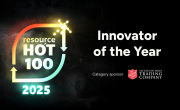WRAP material reports show rise in packaging volumes
The Waste and Resources Action Programme (WRAP) has published a series of reports outlining the quantity of packaging material placed on the market (POM) and the likelihood of reaching recycling targets.

Taking the estimated POM estimates in conjunction with the latest recycling data, WRAP’s Material Flow 2025 reports estimate the potential future recycling levels to 2025 and assess whether or not different materials will reach national recycling targets, as well as the EU Circular Economy Package (CEP) targets, which were established in June last year.
According to the reports, the quantity of glass, paper and card, and steel packaging POM in 2017 all increased by four per cent compared to previously published Material Flow reports. Aluminium packaging POM is estimated to have risen by 11 per cent, while wood POM has declined by one per cent.
The reports reveal that aluminium is expected to meet its recycling targets of 58 per cent in 2018, 61 per cent in 2019, and 64 per cent in 2020. The UK is already meeting the proposed CEP aluminium recycling target of 50 per cent in 2025, according to the reports.
The reports also indicate that paper and card is expected to meet both the national and CEP recycling targets of 75 per cent by 2020.
Whilst steel packaging is expected to meet recycling targets in 2018 (79 per cent) and 2019 (82 per cent), it is estimated to fall short of the 85 per cent 2020 target. However, the results indicate that steel packaging is already meeting the proposed CEP recycling target of 70 per cent.
In terms of glass packaging, recycling rates are expected to fall short of the 2018 (78 per cent), 2019 (79 per cent) and 2020 (80 per cent) targets, but are likely to meet the CEP target of 70 per cent in 2025.
WRAP Economist Peter Sainsbury said: “The Material Flow reports highlight the potential risks to meeting each packaging material recycling targets, and so it’s important for industry to be aware that further actions may be required to ensure that future recycling targets are met.”
Targeting plastic packaging
WRAP published a report on the future of plastic packaging recycling, entitled PlasticFlow 2025, in October 2018, estimating that the UK is likely to meet plastic packaging recycling targets in 2018, 2019 and 2020, as well as the CEP target in 2025.
However, according to the PlasticFlow report, the UK is set to miss the 70 per cent UK Plastics Pact target for 2025.
The UK Plastics Pact, launched in April 2018, has seen a range of businesses commit to reducing their plastic packaging, and has published a list of items, including disposable plastic cutlery and plastic straws, which should be eliminated by 2020.
However, despite the current fixation on reducing plastic, alternative packaging materials are not necessarily a better option for the environment. Last month, think tank Green Alliance published a report warning that drinks containers made from alternative materials such as aluminium and glass also have significant environmental drawbacks. Aluminium cans, for example, have a worse impact than plastic bottles in terms of production, and drinks cartons, although having a lower carbon footprint, are difficult to recycle.
WRAP states that its new reports will prove important in helping the Department for Environment, Food and Rural Affairs (Defra) to develop the policies proposed in its Resources and Waste Strategy, which aims to increase recycling rates and improve the sustainability of packaging.
You can view the Material Flow 2025 reports for wood, paper and card, glass and metal on WRAP’s website. 








